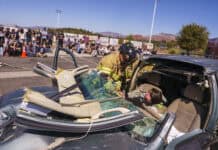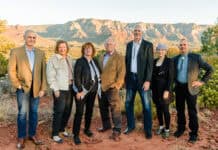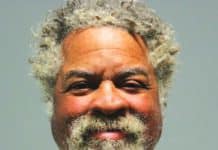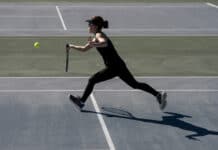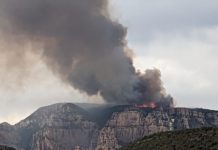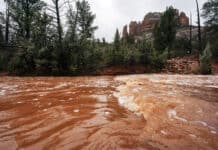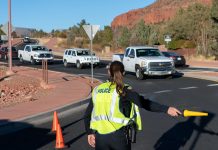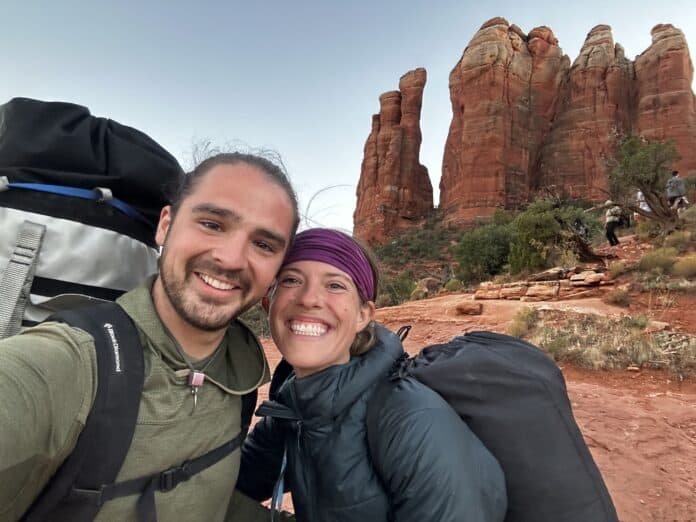
Lorenzo DeMuro spent the weekend of Oct. 19 and 20 BASE jumping, rock climbing and highlining at Cathedral Rock. Highlining is a sport that involves balancing on a line strung between two elevations at heights greater than 30 feet, while BASE jumping involves parachuting from four objects: Buildings; Antennas, i.e., radio masts; Spans, i.e., bridges; and Earth, from cliffs or mountains.
“With all three of these sports, the theme is conquering fear using all the preparedness that we can, stepping into the unknown, so BASE jumping was just another way to manifest that pursuit,” DeMuro said. “I had climbed what we climbers know as the ‘Mace’ at Cathedral Rock … but the main tower formation at Cathedral, I’ve climbed that as long as I’ve been a climber.”
DeMuro and his friends first rigged a line from the Mace to another tower called the “Dodger” several years ago.
“It’s this cool way to get a bunch of community involved, because it’s much more than a one-man project,” DeMuro said. “It takes teams of climbers to put this thing up, and then everyone gets to hang out for the weekend and have an amazing time hanging out on top of the tower.”
DeMuro said that highlining Cathedral fulfilled one of his college dreams. He has also participated in the sport in China, Greece and Thailand, as well as elsewhere in the United States, but said that “this one is my favorite because it’s my baby it was like my project. I was the first person to rig it, and I was the first person to ever cross it without falling.”
Highlinning is not prohibited in the Coconino National Forest, as long as participants use natural anchors such as rocks and trees and do not cause damage to natural resources, or make use of anchors that have already been installed.
“There is also no specific rule or regulation on the Coconino National Forest that prohibits BASE jumping, though equipment such as a wingsuit could be interpreted as hang gliding, which is prohibited within designated wilderness,” Red Rock Ranger District Ranger Alex Schlueter stated. “Hang gliding is not prohibited outside of designated wilderness.”
DeMuro graduated from Northern Arizona University in 2018, where he developed his climbing and highlining skills as well as an interest in BASE jumping. He eventually met Daniel John Ristow, one of the world’s youngest wingsuit BASE jumpers, who then encouraged him to learn skydiving and later mentored him in BASE jumping. Ristow died during a jump in Lamoille Canyon in Nevada on June 14, 2021.
On Nov. 12 of this year, DeMuro completed his 510th BASE jump in Moab, Utah, in spite of having broken both of his feet in June.
“It just started by meeting someone who was willing to teach me and being a good student and being tenacious at the opportunity that was in front of me,” DeMuro said.
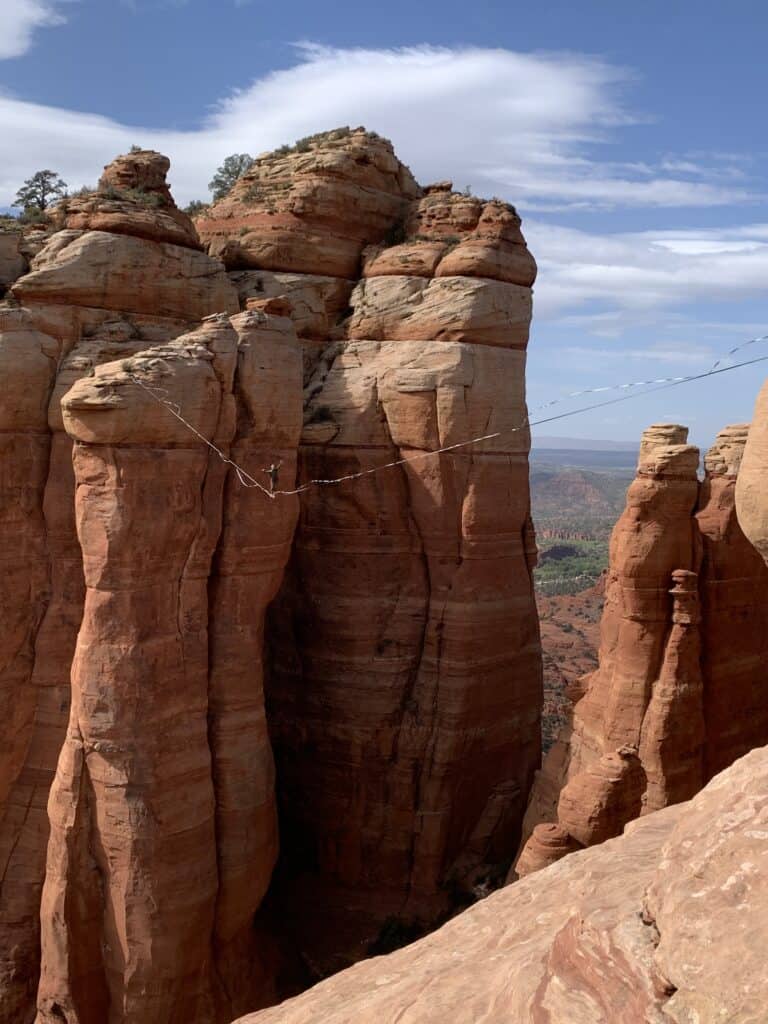
Photo courtesy Lorenzo DeMuro
DeMuro is part of a Northern Arizona-based athlete collective called the Zen Lunatics.
“I was drawn to Cathedral Rock out of appreciation for its sheer beauty,” DeMuro said. “Sedona is the most beautiful part of Arizona, and Cathedral Rock being one of the epitomes of Sedona’s beauty. It almost feels for me that Sedona is built around Cathedral Rock. And it felt like the perfect place to test this myriad of skills I’ve acquired. It had the opportunity to climb, to rig, to coordinate safety for other people. I led this project, but there was 15, 20 of us that got up there, and that was done through the effort of every individual, made possible by my experience creating safe systems.”
Slackliners are secured to the highline using a tether between six and 10 feet long and a standard climbing harness. The tether is connected to a pair of rings that slide along the main and backup highline webbing, allowing freedom of movement along the line while preventing fatal falls.
DeMuro said that he became interested in the sport by doing slacklines on the NAU campus between classes, but then started increasing the height of his lines for more physical and mental challenge.
“With highlining there’s two additions: A more intense and adventurous setting and the rigging challenge,” DeMuro said. “Rigging a slackline on the ground, there’s technical components to it, but it’s not life-supporting. But once you’re learning how to rig a highline with harnesses, people’s lives are in your hands. I was excited by the opportunity to learn how to rig these lines safely. It was a fun challenge.”
He said that he enjoys BASE jumping for the same reason: The challenges.
“The act of flight is this perfect balance of boldness and strategic understanding of aerodynamics and sciences, understanding micro- and macro-meteorology, and it’s this mixture of brain and brawn, and I love that as well as the community,” DeMuro said. “It’s this balance between understanding stall speeds, angle of attack and being able to execute it physically, and also have this mental battle with fear the entire time. It’s just another way to conquer fear.”
“Sometimes when people see the slack line, or they see the climbers, or the BASE jumping, they think that it’s disturbing to the natural environment, or we’re damaging the rock, or we’re hindering people’s experience outside,” DeMuro said.
“Sometimes these things can be inevitably true, just like when you bump into a mountain biker on the trail. We’re really receptive to open dialog about how we can do our sport sustainably. And we’re just like someone who wants to hike or mountain bike, because we’re just other people that want to play outside. And we want to preserve access to the outdoors for everybody and encourage more people to get outside.”


